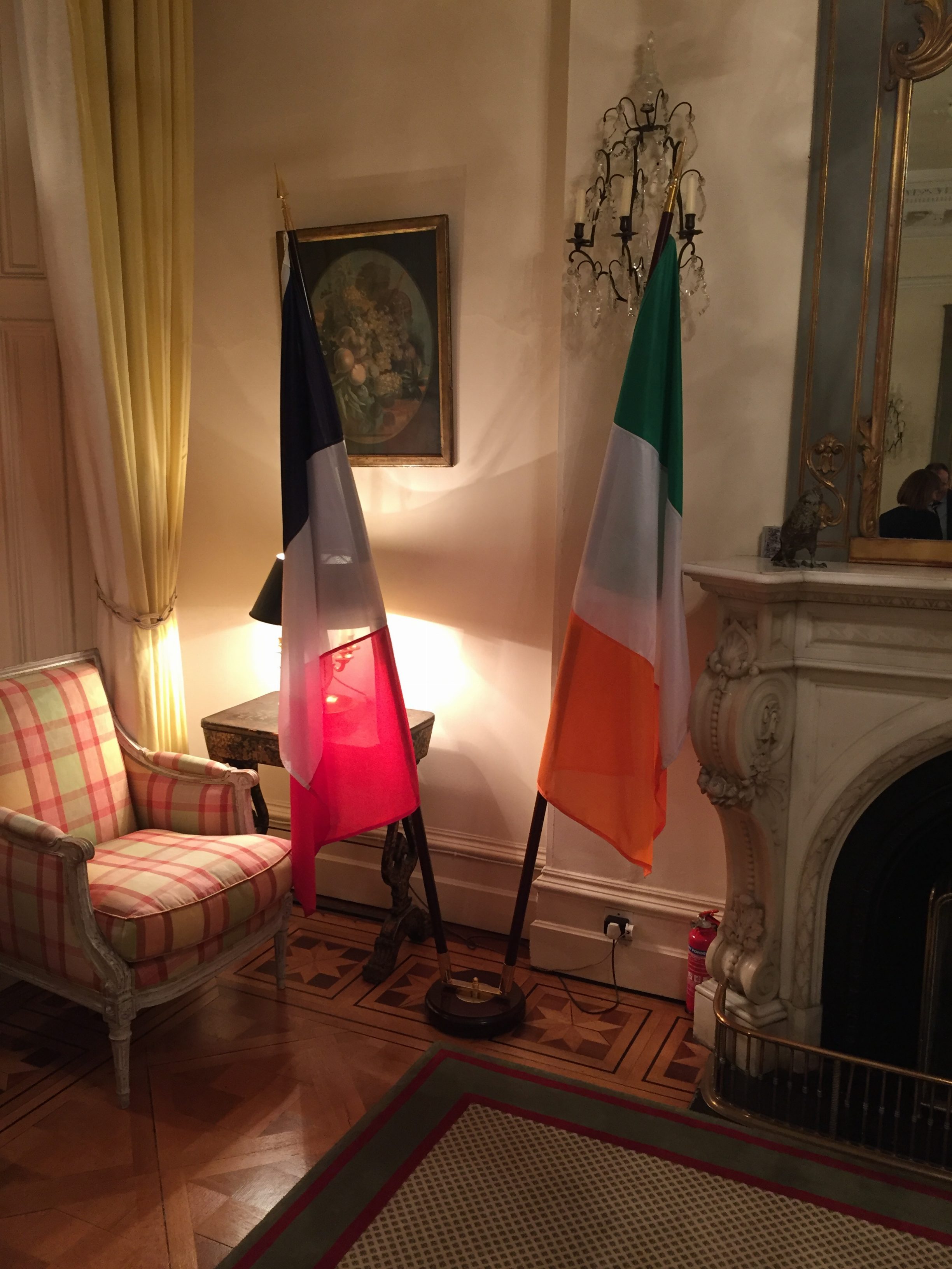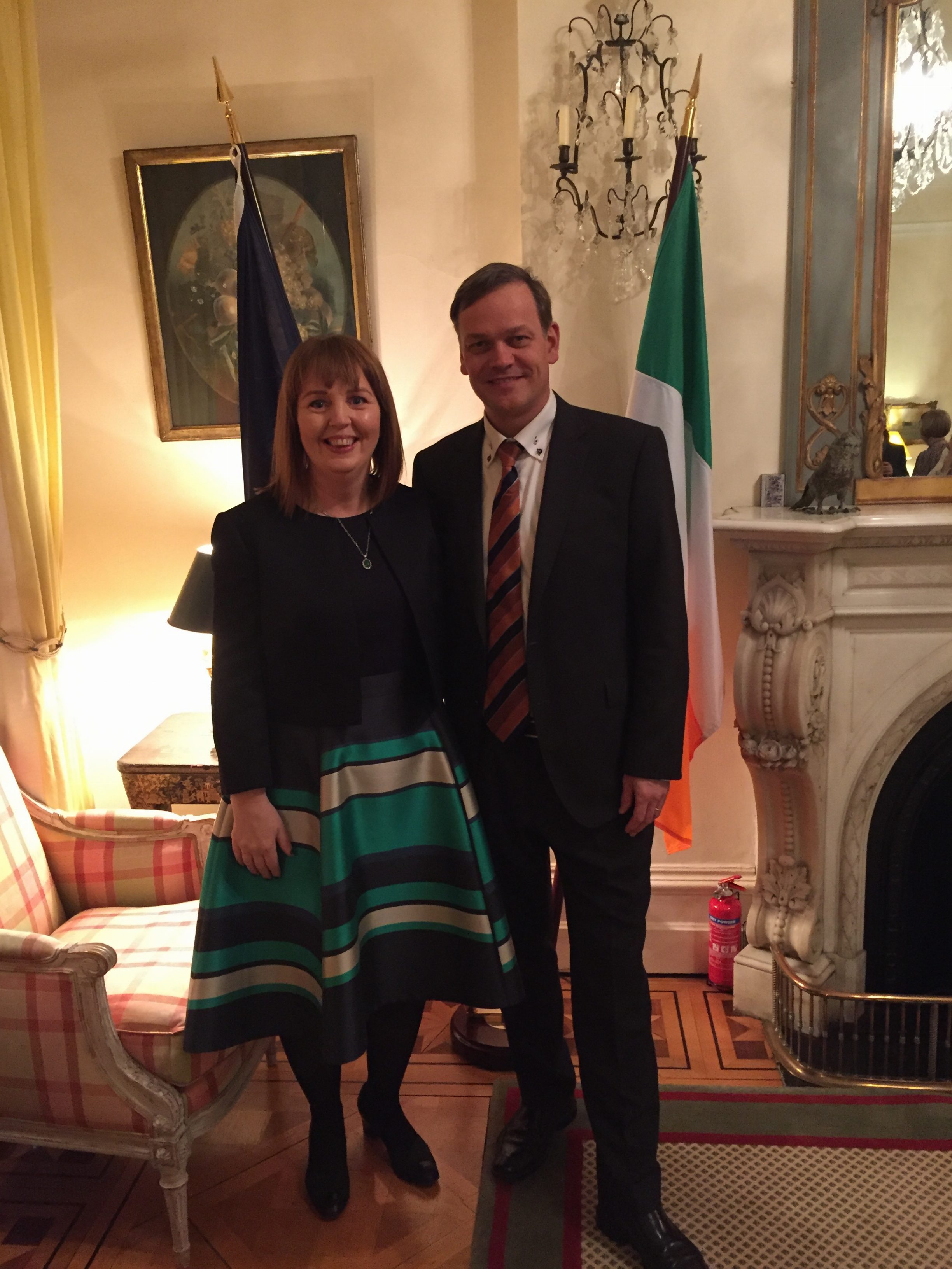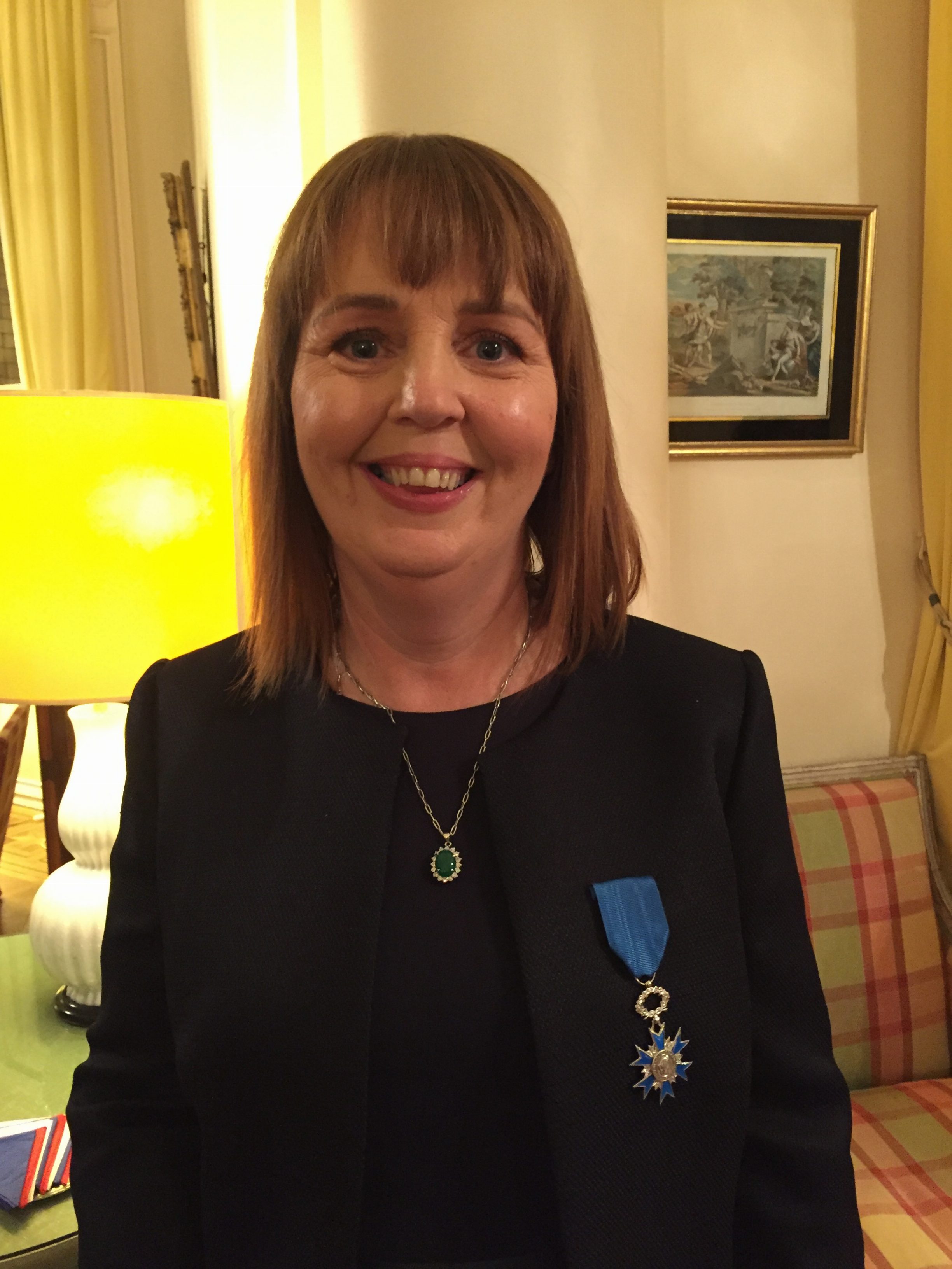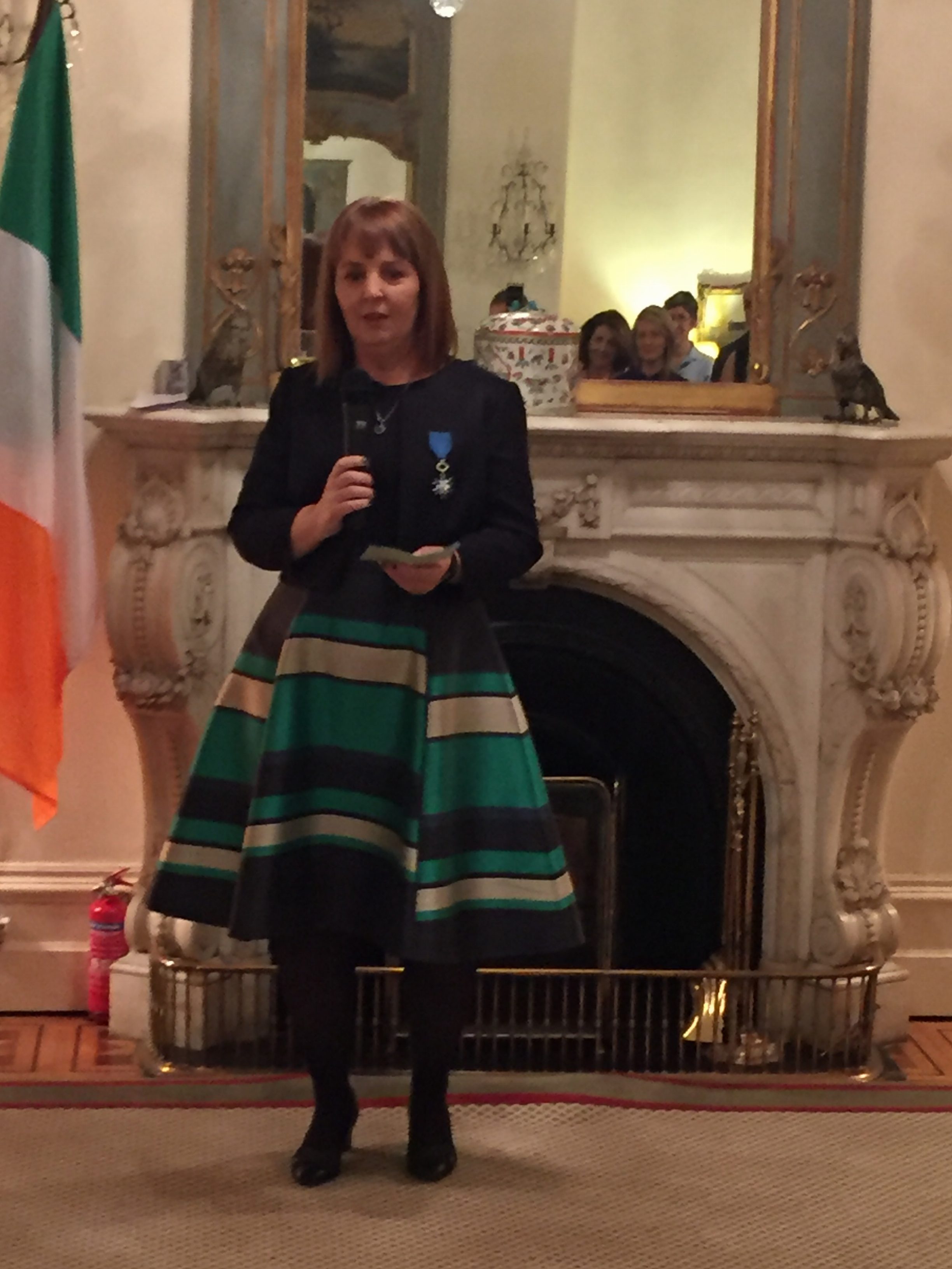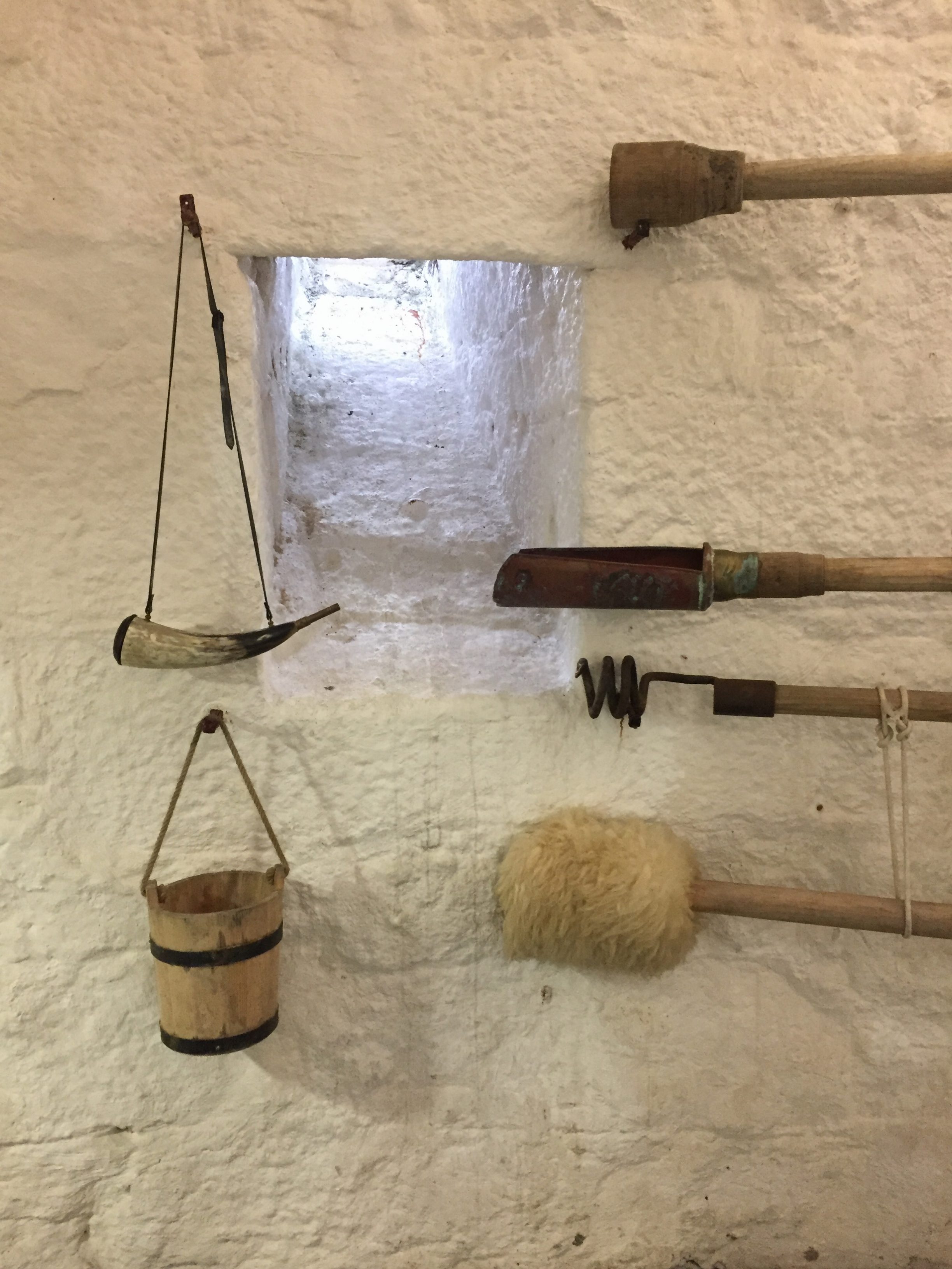Monthly Archives:

Jillian van Turnhout awarded Chevalier de l’Ordre National du Mérite
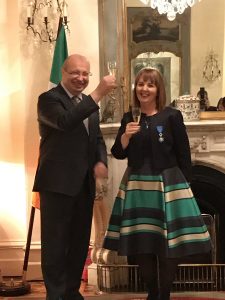
The founder of Genealogy.ie, Jillian van Turnhout, was awarded the prestigious Chevalier de l’Ordre National du Mérite by the President of the French Republic. The Chevalier de l’Ordre National du Mérite is the second highest national order of France and was presented to Jillian van Turnhout by the Ambassador of France to Ireland at an event hosted in the French Residence in Dublin
The award was made in recognition of Jillian van Turnhout’s work in strengthening children’s rights and for her engagement with civil society organisations across Europe.
On receipt of the Chevalier de l’Ordre National du Mérite, Jillian van Turnhout said “I am immensely honoured to be recognised by the President of the French Republic for my work in promoting children’s rights and for my engagement with civil society organisations across Europe. Recent world events have strengthened my resolve and belief in the European Union project and to advocate for a Europe that is stronger together. This award and the French national motto of ‘liberty, equality, fraternity’ remind me of our shared values. We must work together in solidarity to uphold and ensure the rights of all citizens to live without fear in a world that respects freedom, democracy and equality.”
At the event in the French Residence, the Ambassador of France to Ireland, H.E. Jean-Pierre Thébault, remarked that “with the bestowal of the Ordre National du Mérite to Ms Jillian van Turnhout, France wishes to acknowledge a friend’s lifetime commitment and the part she played on numerous subjects that require flag bearers: from issues related to children’s rights to the promotion of the European ideal. Jillian’s public and professional paths are also testament to the important role women play in public life to make change happen and shape a better and more inclusive society.”
Maurice Pratt, Chairman of European Movement Ireland, commenting on the distinguished honour, said “There are few people more deserving of this award than Jillian. Having worked closely with Jillian, I have seen her tireless dedication to the causes she champions, including Irish-European affairs and children’s rights. It is a pleasure to see her being recognised for her outstanding contribution to developing Irish-European relations, and Irish-French relations in particular. I offer her my sincere congratulations on this well-deserved honour.”
The Chief Commissioner of the Irish Girl Guides, Helen Concannon, who also attended the event, said: “We are delighted to congratulate Jillian on the acknowledgement by another country of her tireless work for young people. She epitomises what the Baden Powells, the founders of Guiding and Scouting, meant when they said, ‘Girls should be brought up to be comrades and helpers, not to be dolls. They should take a real and not a visionary share in the welfare of the nation.’ “We are proud of all Jillian has achieved and all she continues to achieve through her involvement with Girl Guides,”
Biography Jillian van Turnhout
In addition to her work with Genealogy.ie, Jillian van Turnhout is a leading children’s rights advocate and a former Irish Senator. In her 5 year term in Seanad Éireann (upper house Irish Parliament), Jillian spearheaded a number of legislative and policy changes to further children’s rights. Jillian is involved with several not-for-profit organisations on a pro bono basis including as Vice Chair of European Movement Ireland, Chair of Early Childhood Ireland and Chair of Children in Hospital Ireland. She is a former Chief Executive of the Children’s Rights Alliance, former Chief Commissioner Irish Girl Guides and former President of the National Youth Council of Ireland.
For over 12 years Jillian was a member and Vice President of the EU Advisory Body, the European Economic and Social Committee. Jillian drafted the first Opinion from an EU body on the need for a European Youth Policy and published a number of papers to further children’s rights. Jillian represented the EESC on the Steering Group for the European Forum on the Rights of the Child and the EESC EU-China Round for over 6 years leading to first formal dialogue on children’s rights between China and EU in 2010 in Chongqing, China. Jillian is a co-founder of the European Youth Forum.
Below are some photos taken at the event. Click on it for a larger image.
We hope you enjoyed this gallery. Why not have a look at the rest of our website?

Marlay House: A Visit
Genealogy.ie believes that your family story is not just about names and dates of people in your family tree. We think it is also about the places where they lived and worked, the houses they lived in. This is why, when we search Irish ancestry for our clients, we also offer Irish local history research and investigation. In most cases our research is into the history of a house or farm. But it can also be a village or even an event. Depending on records available this gives you a picture of how your ancestors would have lived. And thus add colour to your Irish family history.
Take Marlay House. Up to quite recently it was a large demesne (mansion house which was also a working farm, albeit a large one). Watch our short presentation:
MARLAY HOUSE
Marlay as a land holding traces its origins back to the Anglo-Norman times. The Fleming family were the first owners, followed by by the Cistercian religious order. Religious orders were the biggest landowners at the time. King Henry VIII abolished them and resold the lands he took. The new owner was called Taylor.
He build the older farmhouse, a large part of it still in existence (courtyard). It was then bought by a series of families who used the property as their ‘out of town’ refuge. Living in the growing city of Dublin was unhealthy. Therefore rich families bought farms and lands and constructed mansion houses in the immediate environs of the city. The area around Marlay was very popular as it was at the foot of the Dublin and Wicklow mountains. This not only had fresher air but also offered stunning views. The first of these families built Marlay House.
This was actually the name of the wife of the owner, a bishop’s daughter. His own name was LaTouche. His family were Huguenots who had fled France. They started as weavers but became a wealthy banking family. After a few different families had owned the property, the last of them, the Tedcastle family, sold it to the local council who has turned the gardens into a great public park and is in the process of restoring the house. This spring free tours are available to see the inside of the ground floor of the house.
We hope you enjoyed the video and story. Why not have a look at the rest of our website?

We were inside Dublin’s Defensive Martello Towers
Click on the photo for a larger picture or scroll down for the text.
Martello towers are small defensive round towers that were built across the British Empire during the 19th century. They were named after the “Torra di Mortella”, which in 1794 kept an entire British fleet at bay for two days. It was captured in the end, and the British marveled at the fact that this small fort with only a few men had resisted for so long. So they decided to copy it.
In Dublin they were built after the French Revolution, to ward off a potential invasion. Most towers have 2 floors and are approximately 40 feet/12 meters high. They would be guarded by a small garrison of about 20 men, commanded by 1 officer. The officer would be responsible for the health and well being of the men. He would normally reside downstairs, where he could keep an eye on the stocks and weapons.
Because the towers were round, and were constructed of very thick walls of solid masonry, they could withstand cannon fire. At the same time, their height made them an ideal platform for a single heavy artillery piece. This cannon could be found on the flat roof. It could be turned and thus cover a large area. By building a string of these towers, with overlapping ranges, they covered the entire Dublin coast.
In Dublin they never fired a shot in anger and they became obsolete towards the end of the 19th Century. Quite a few have survived to this day, like the one in Seapoint, pictures of which you can see on the page. We visited this tower as part of the Summer Heritage program of the Dun Laoghaire County Council.
For a YouTube video impression of the Seapoint tower, click on the link (opens in a new window).
Another tower is open all year, as it is now a museum dedicated to James Joyce. Admission is free. Follow this link for more information
We hope you enjoyed these photos and the story. Why not have a look at the rest of our website?
